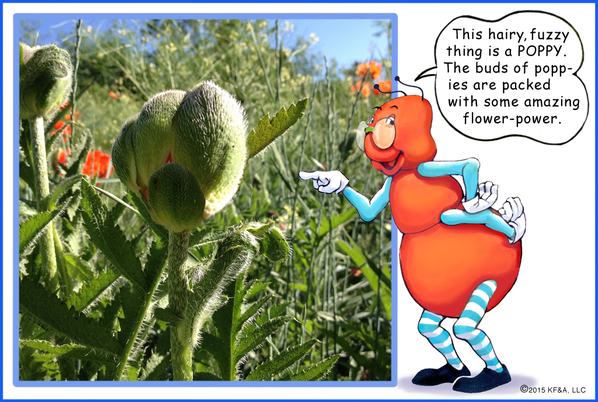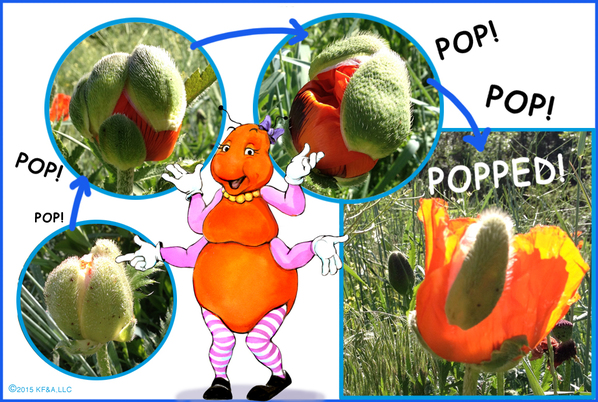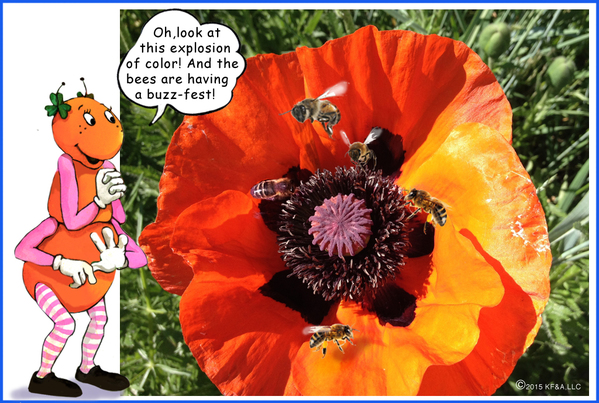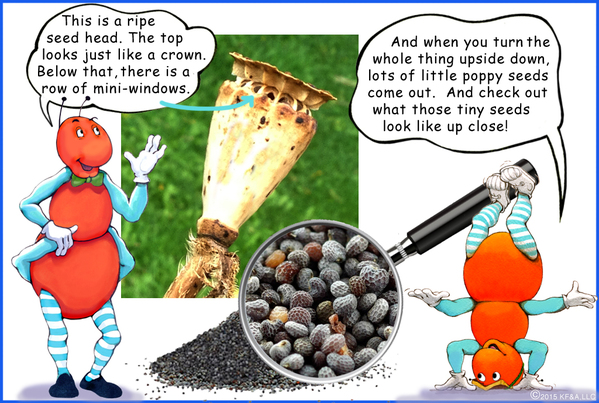POPPIES |

Poppies grow both in the wild and perhaps in your garden.
There are many different kinds. Some poppies are smaller and more delicate, like the Iceland Poppy. The one we're showing here, grows tall ( 2 - 3 feet ) and has HUGE flowers. It's called Oriental Poppy. As you can see, practically the whole plant is covered with tiny, tiny hairs.
There are many different kinds. Some poppies are smaller and more delicate, like the Iceland Poppy. The one we're showing here, grows tall ( 2 - 3 feet ) and has HUGE flowers. It's called Oriental Poppy. As you can see, practically the whole plant is covered with tiny, tiny hairs.

As the poppy gets ready to bloom, it pushes its way out of a three part bud-hull.
It doesn't just unfold gently from the base like most flowers, but pops right out, splitting the bud in 3 pieces. It's like a slow-motion
quiet explosion.
It doesn't just unfold gently from the base like most flowers, but pops right out, splitting the bud in 3 pieces. It's like a slow-motion
quiet explosion.

The Oriental Poppy is very popular with the bees. If you walk by a group of poppies you will hear some serious buzzing going on.
We gallavants look forward to the popping poppies every late spring and early summer. The color of this 6-7 inch colossal blossom is a brilliant orange and red. Queen Millikan loves her capes made from the silky poppy-petals.
We gallavants look forward to the popping poppies every late spring and early summer. The color of this 6-7 inch colossal blossom is a brilliant orange and red. Queen Millikan loves her capes made from the silky poppy-petals.

After the flower is fertilized by bees, the petals and the dark brown stamens dry up and drop off. The part underneath the stigma, that's the pink thing in the middle, starts to grow and becomes a seed head. Inside, little tiny dark seeds are formed. When it's all ready the seeds are released and with the help of the wind they spread out. And so there will be more popping poppies.